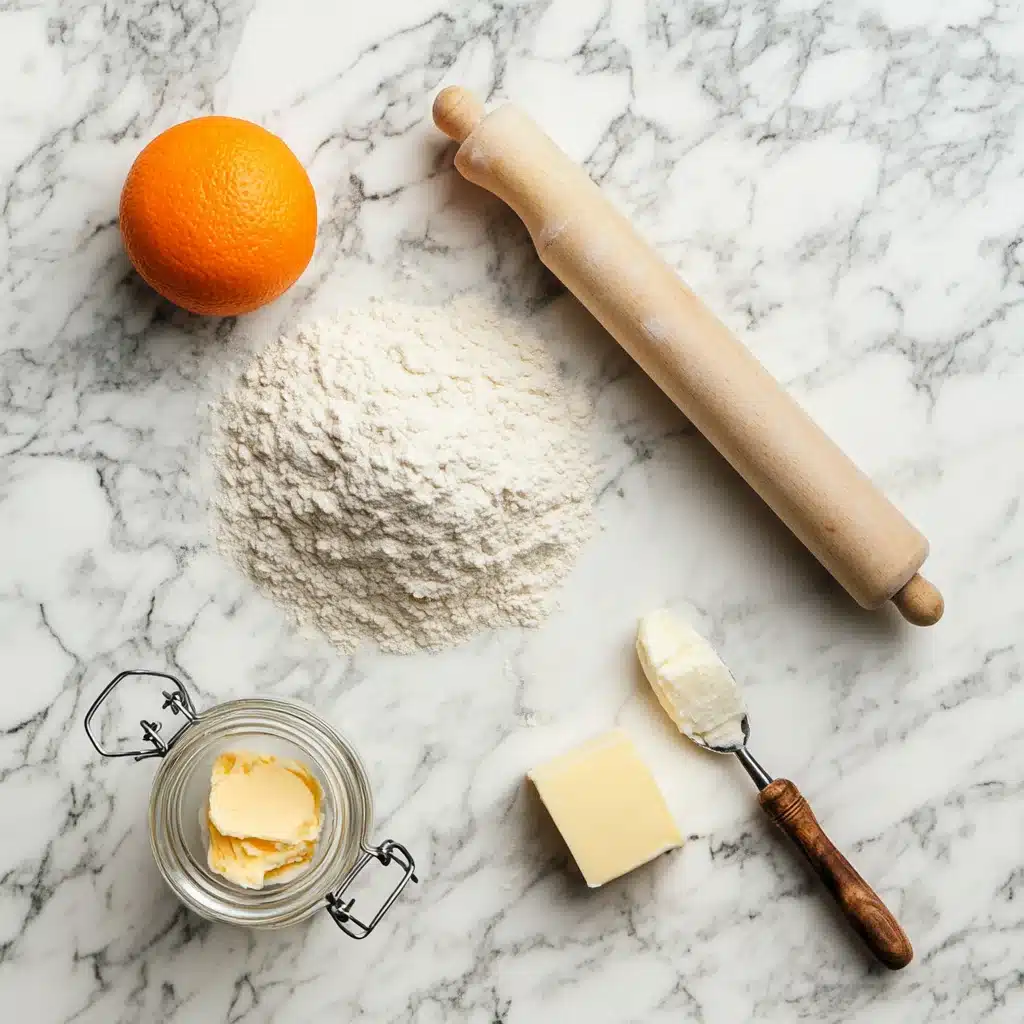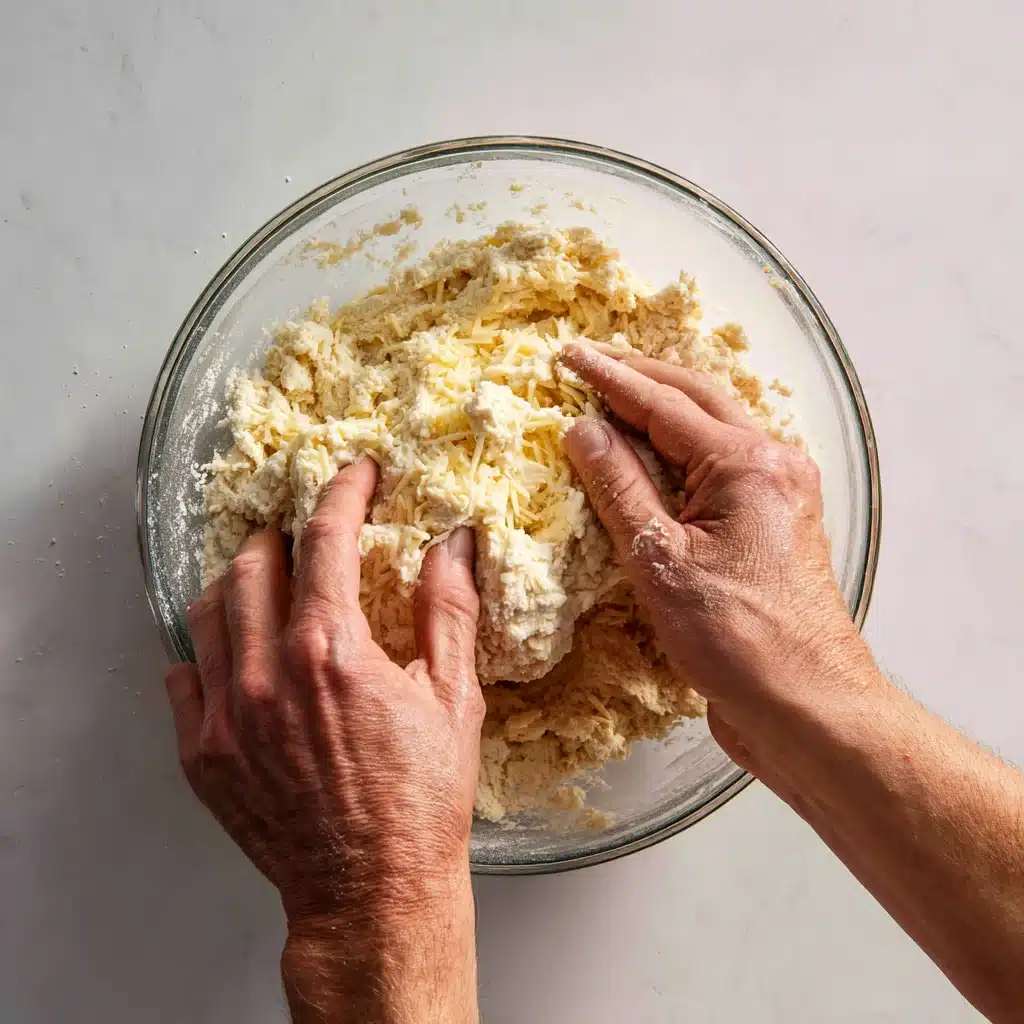The phrase croissant sourdough bread viral isn’t just a fleeting trend, it’s a movement. This hybrid marvel takes the tangy depth of traditional sourdough and folds in buttery croissant decadence. From the first crackle of the crust to the honeycomb layers within, it’s everything bread lovers dream about. Why has it gone viral? Because it’s the lovechild of artisan fermentation and laminated indulgence. In this article, I’ll walk you through my personal baking journey, give you the complete step-by-step recipe, and answer the biggest questions everyone’s asking about this show-stopping loaf. Get ready to learn, stretch, fold, and bake something unforgettable.
The Story Behind My Croissant Sourdough Bread Viral Obsession
There’s something magical about waking up in Mendocino with sea fog hugging the coastline and Clementine, my sourdough starter, bubbling away on the counter. That magic turned into obsession the day I failed to impress a date with a sad, dense boule. He disappeared. But the dough? It stuck around.
Fast forward: I now run Marlene & Crumb, a tiny bakery where people line up for poetry, bake-alongs, and what’s quickly become my signature loaf, croissant sourdough bread viral for all the right reasons.
This isn’t a trend, it’s a transformation. When the croissant sourdough bread viral explosion hit Instagram and TikTok, I was skeptical. Could laminated layers and wild yeast really coexist? But the moment I pulled that first crackly, golden loaf from my Dutch oven, I understood. Tangy. Flaky. Butter-rich. All in one bite.
The recipe combines everything I love about baking: slow fermentation, perfect timing, cold butter, and trust in the process. Croissant sourdough bread viral recipes have taken the world by storm because they deliver both taste and texture. This hybrid loaf is not just gorgeous, it’s technical, satisfying, and absolutely worth the effort.
At my workshops, this bread now shares the spotlight with my classic sourdough and rosemary focaccia. It’s the kind of bake that makes people gasp when they slice it open. You get honeycomb pockets and a buttery crust that crackles like a croissant, but with that chewy sourdough tang.
Want to try it? You’ll find it’s much easier than it looks, as long as you keep that butter cold and your starter happy. (P.S. Our sourdough brioche buns and butter-rich pull-apart rolls are also great next steps.)


Croissant Sourdough Bread Viral: 1 Irresistible Recipe to Bake Today
- Total Time: 24 hours
- Yield: 1 loaf 1x
- Diet: Vegetarian
Description
This croissant sourdough bread viral recipe blends the tangy depth of sourdough with flaky, buttery croissant layers using a simple grated butter method and cold fermentation. The result? A golden crust, a tender honeycomb interior, and a loaf that’s gone viral for good reason.
Ingredients
Levain (1:10:10 ratio, 10–12 hours at 78–80ºF)
6 grams sourdough starter (ripe and active)
60 grams all-purpose or bread flour
60 grams water
Sourdough Croissant Bread
120 grams levain
340 grams water
10 grams salt
500 grams bread flour
113 grams unsalted butter (cold, grated)
Instructions
1. Mix the levain ingredients and let it rise for 10–12 hours until bubbly and peaked.
2. Combine levain, water, salt, and flour in a bowl. Mix into a sticky dough. Rest for 30 minutes.
3. Perform 4 sets of stretch and folds over 2 hours, resting 30 min between each set.
4. After fold #2, add half of the grated cold butter and fold to incorporate.
5. After fold #3, add the remaining butter. Fold gently and completely.
6. After the final fold, bulk ferment 6–7 hours until dough has risen ~70% and shows bubbles.
7. Pre-shape into a loose round and let bench rest for 30 minutes.
8. Shape into a tight round and place into a floured proofing bowl.
9. Cold ferment in the fridge overnight (12–18 hours).
10. Preheat Dutch oven to 450°F. Flip cold dough onto parchment, score at a 30° angle.
11. Bake covered at 425°F for 25 minutes. Uncover and bake for 20 minutes more.
12. Cool completely on a wire rack before slicing.
Notes
Use grated cold butter rather than a full butter block—easier lamination!
Keep your dough temperature between 70–72ºF to maintain butter structure.
Use parchment paper in the Dutch oven to catch butter and prevent sticking.
Let the loaf cool fully before slicing to preserve the crumb and crust.
- Prep Time: 30 minutes
- Cook Time: 45 minutes
- Category: Sourdough, Bread
- Method: Baking
- Cuisine: French-American
Nutrition
- Serving Size: 1 slice
- Calories: 240 kcal
- Sugar: 1 g
- Sodium: 290 mg
- Fat: 10 g
- Saturated Fat: 6 g
- Unsaturated Fat: 3 g
- Trans Fat: 0 g
- Carbohydrates: 32 g
- Fiber: 1 g
- Protein: 6 g
- Cholesterol: 25 mg
Keywords: croissant sourdough bread viral, flaky sourdough, hybrid sourdough loaf
Why Croissant Sourdough Bread Viral Bakes Are Technically Brilliant
Fermentation & Temperature Control
The success of croissant sourdough bread viral recipes depends on mastering two things: fermentation and lamination. While traditional croissants rely on yeast for rise, sourdough brings an added challenge, timing. The dough must ferment slowly enough to develop flavor but stay cold enough to keep the butter intact.
That’s why I recommend maintaining dough temperature around 70–72ºF. This sweet spot allows the wild yeast in your levain to work gradually while the butter stays firm and pliable. Anything warmer, and you risk melting the butter before it gets folded into those dreamy croissant layers.
Most viral sourdough croissant bread recipes skip this step, but temperature is everything. I use cool water and check with a thermometer throughout bulk fermentation. My laminated loaves never leak or collapse, because they’re built on structure and control.
If you’re still building confidence with timing and temperature, my easy sourdough schedule and starter feeding guide can help simplify the process.

Lamination: Cold Butter Meets Wild Fermentation
Croissant-style lamination in a sourdough loaf is a game-changer. You don’t need to fold a full butter block, instead, grated butter gets gently folded in during stretch-and-folds. This method creates distinct pockets of fat, giving your bread a crackly crust and croissant-like interior.
The beauty of the croissant sourdough bread viral method is that it uses your hands, your senses, and time, not machines. It’s tactile, slow, and wildly satisfying. You’re not just baking bread. You’re creating layers of flavor and texture that explode with each slice.
Want more inspiration? Try our sourdough cinnamon swirl bread or this olive-stuffed sourdough boule for variations that balance flavor and structure.
How to Make Croissant Sourdough Bread Viral at Home
The Stretch, Fold & Butter Technique
To make croissant sourdough bread viral from your own kitchen, you don’t need a pro kitchen, just patience, cold butter, and strong hands. Start by building your levain 10–12 hours ahead using a 1:10:10 ratio. At peak ripeness, it should be bubbly, doubled, and smell sweet and tangy.
Once your levain is ready, mix it with water, salt, and bread flour to create a soft, sticky dough. After a short rest (called autolyse), you’ll begin four rounds of stretch and folds across 2 hours. This builds structure without aggressive kneading.
Here’s where things get beautiful: Instead of folding in a butter block like traditional croissants, you’ll grate cold butter and gently fold it into the dough over two sessions. This method ensures flaky pockets of butter throughout the crumb without the intimidation of classic lamination.
By the third and fourth folds, the dough should feel smoother and more elastic. This technique helps you create that signature croissant sourdough bread viral texture: crisp edges, blistered crust, and layers that sing when sliced.
Need visual support? Our visual shaping guide and lamination tips for beginners are excellent companions as you fold, shape, and rise.
Proof, Chill & Bake: Let the Dough Work Overnight
Once shaped, your dough rests overnight in the fridge. This cold fermentation is key, it slows the rise while locking in flavor and texture. Next day, preheat your oven with a Dutch oven inside. Straight from the fridge, flip the dough onto parchment, score it at a 30º angle, and bake hot.
Start at 450°F (covered), then reduce to 425°F and uncover after 25 minutes. The butter will sizzle, the crust will darken, and your kitchen will smell outrageous.
This is the moment the croissant sourdough bread viral loaf becomes unforgettable.
Croissant Sourdough Bread Viral: Final Tips & FAQs
Secrets to That Viral-Worthy Finish
When you slice into a perfect croissant sourdough bread viral loaf, the payoff is obvious: golden crust, rich butter aroma, and honeycomb-like crumb. But to get there, you need precision, and trust.
Here are final key tips:
- Use cold butter only. Grate it straight from the fridge. If it softens during folding, chill the dough for 10–15 minutes before the next fold.
- Monitor dough temp. Keep it at 70–72ºF for best structure and fermentation balance.
- Score while cold. Don’t let the dough warm up after refrigeration, this preserves sharp edges and that beautiful oven spring.
- Bake on parchment. Butter will leak and sizzle. Parchment prevents sticking and makes transferring safe.
This bake combines the best of both baking worlds: fermented tang and laminated flake. It’s the reason croissant sourdough bread viral recipes continue to explode across baking feeds, and why this loaf is worth mastering.

Conclusion: Why Croissant Sourdough Bread Viral is Worth Every Fold
Croissant sourdough bread viral isn’t just a baking trend, it’s a triumph of patience, precision, and passion. From mixing the levain to that final Dutch oven reveal, every stage of this loaf teaches you something deeper about fermentation, butter, and the beauty of slow baking.
This isn’t fast bread. But it’s unforgettable bread.
Whether you’re baking it to impress friends, refine your skills, or simply enjoy a slice that crackles under the knife, this recipe delivers. It’s flaky, tangy, rich, and every bite tells a story.
If this is your first loaf, welcome to the club. If it’s your fiftieth, I bet you’re still chasing the perfect crumb, just like me.
Want more naturally leavened inspiration? Don’t miss our no-knead sourdough sandwich loaf or the ultra-flaky sourdough pain suisse next.
Now grab your butter, set your starter, and make some magic.
Want to switch it up? Try our lemon poppy sourdough loaf or this flaky sourdough Danish braid next.
FAQ: Croissant Sourdough Bread Viral Questions
Why is sourdough suddenly so popular?
Sourdough surged during the pandemic because people had more time, but its popularity continues due to its complex flavor, gut-friendly benefits, and no-yeast simplicity. Its rustic charm and resilience make it a favorite in both home kitchens and pro bakeries.
What is croissant sourdough bread?
It’s a hybrid loaf that merges the tangy depth of sourdough with the buttery, layered texture of a croissant. Instead of folding a butter block, this method uses grated butter incorporated during stretch-and-folds, yielding a rich, flaky sourdough loaf that’s gone viral for good reason.
Why do athletes eat sourdough bread?
Athletes favor sourdough for its digestibility. The long fermentation reduces gluten and phytic acid, improving nutrient absorption and minimizing inflammation. Its complex carbs offer sustained energy, perfect for fueling performance.
Is sourdough bread still inflammatory?
Compared to commercial white bread, sourdough is less inflammatory due to its lower glycemic index, reduced gluten content, and naturally occurring probiotics. That said, people with gluten sensitivities should still proceed with caution.
for more recipes followo me in pinterest

